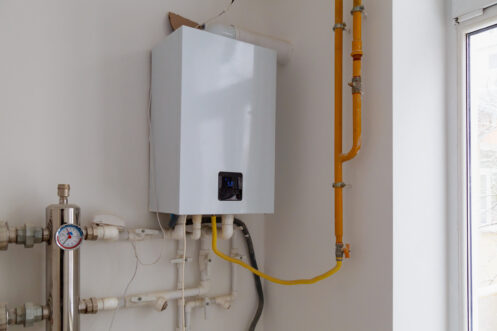Ways to Maintain Your Home's Hot Water System Functioning Well
Ways to Maintain Your Home's Hot Water System Functioning Well
Blog Article
Were you in search of tips involving Tips For Maintaining Your Hot Water Heater?

Warm water is essential for everyday convenience, whether it's for a rejuvenating shower or cleaning dishes. To guarantee your hot water system runs effectively and lasts longer, routine maintenance is key. This article provides useful suggestions and understandings on how to preserve your home's warm water system to avoid interruptions and pricey repair work.
Intro
Keeping your home's hot water system may appear daunting, however with a couple of simple actions, you can guarantee it runs smoothly for years to find. This overview covers every little thing from understanding your warm water system to do it yourself maintenance tips and recognizing when to hire professional help.
Significance of Maintaining Your Warm Water System
Normal maintenance not just prolongs the life-span of your hot water system however additionally guarantees it runs successfully. Disregarding maintenance can lead to decreased effectiveness, higher energy costs, and also early failing of the system.
Signs Your Hot Water System Needs Maintenance
Knowing when your hot water system needs interest can stop significant problems. Watch out for indications such as irregular water temperature level, weird sounds from the heating system, or corroded water.
Purging the Hot Water Heater
Purging your water heater eliminates debris accumulation, enhancing effectiveness and extending its life.
Checking and Replacing Anode Rods
Anode rods avoid corrosion inside the tank. Inspecting and changing them when broken is critical.
Facility Problems Calling For Expert Assistance
Examples include significant leakages, electrical problems, or if your water heater is regularly underperforming.
Routine Professional Maintenance Benefits
Specialist upkeep can include extensive examinations, tune-ups, and making certain conformity with safety and security criteria.
Inspecting and Readjusting Temperature Setups
Adjusting the temperature setups makes sure ideal performance and safety and security.
DIY Tips for Upkeep
You can carry out several upkeep tasks on your own to keep your warm water system in leading problem.
Checking for Leakages
On a regular basis examine pipelines and connections for leakages, as these can bring about water damage and greater expenses.
Recognizing Your Hot Water System
Prior to diving into upkeep jobs, it's helpful to comprehend the fundamental components of your hot water system. Generally, this includes the water heater itself, pipelines, anode rods, and temperature level controls.
Regular Monthly Upkeep Tasks
Regular month-to-month checks can help capture minor concerns before they rise.
Testing Stress Relief Valves
Checking the pressure safety valve guarantees it works appropriately and avoids extreme stress buildup.
Insulating Pipes
Shielding hot water pipes minimizes heat loss and can save power.
When to Call an Expert
While do it yourself upkeep is useful, some concerns require expert experience.
Conclusion
Normal maintenance of your home's warm water system is crucial for efficiency, durability, and price savings. By complying with these ideas and knowing when to seek expert aid, you can ensure a reputable supply of warm water without unanticipated disruptions.
Water Heater Maintenance Tips
Test the TPR Valve
Shut off the power and the cold-water supply valve. Place a bucket under the pipe connected to the temperature-pressure-release (TPR) valve on the top or side of the tank. (This valve opens if the tank pressure gets too high.) Lift the valve’s tab to let some water out, then let go. If water keeps flowing, drain the tank partway, unscrew the old valve with a pipe wrench, and install a new one. Check the Anode Rod
Put a hose to the tank’s drain cock and let out a few gallons of water. Now fit a 1 1/16-inch socket onto the rod’s hex head on top of the heater (or under its top plate) and unscrew the rod. If it’s less than ½ inch thick or coated with calcium, buy a new one, wrap its threads with Teflon tape, put it back in the tank, and tighten securely. Use this segmented rod if headroom above the tank is limited. Drain the Tank and Wash Out Sediment
Drain the remaining water in the tank into the bucket, then stir up the sediment on the tank’s bottom by briefly opening the cold-water supply valve. Drain and repeat until clean water comes out of the hose. Close the drain cock, refill the tank, and turn its power back on. Adjust the Temperature
Find the temperature dial on the side of the tank and unscrew its cover. Adjust the dial to 120 degrees using a flathead screwdriver. For every 10 degrees the temperature is lowered, you can expect to save up to 5 percent in energy costs. Turn the water heater off or the thermostat down to its lowest setting if you plan to be away from home for more than three days. Insulate the Pipes
Buy some self-sticking 3/8-inch-thick foam pipe insulation that matches the pipes’ diameter. Slide the foam over the hot-and cold-water pipes as far as you can reach. Insulating the cold-water pipe prevents condensation in summer. Peel the tape and squeeze the insulation closed. If the pipe is 6 inches or less from the flue, cover it with 1-inch-thick unfaced fiberglass pipe wrap. https://www.thisoldhouse.com/plumbing/21016402/how-to-maintain-a-water-heater

I stumbled upon that write up about Water Heater Maintenance Tips You Can't Afford to Forget when browsing the internet. Enjoyed our piece? Please share it. Let another person discover it. I love reading our article about Tips on Maintaining a Water Heater.
Schedule Appointment Now Report this page